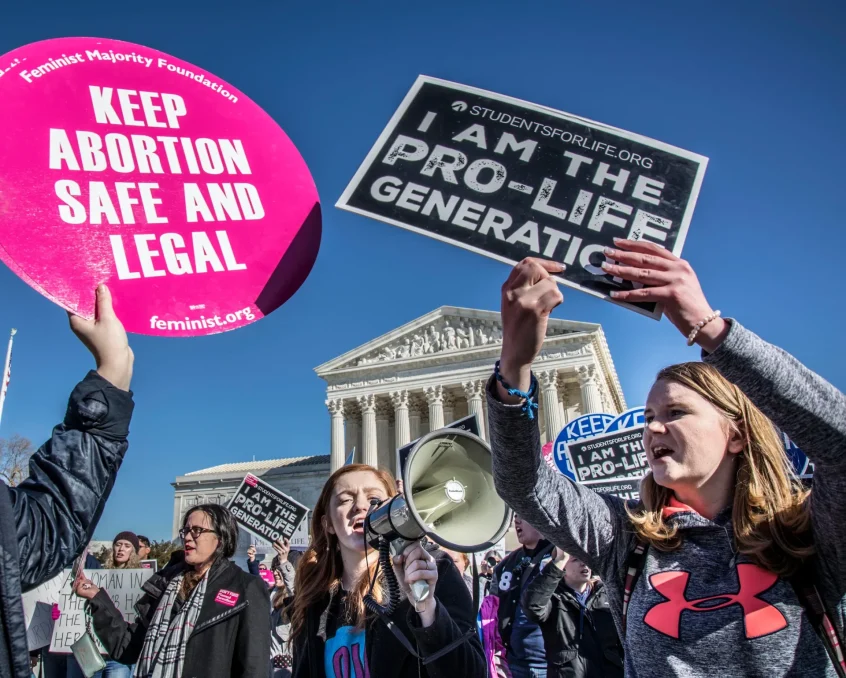In a pivotal moment that resonates far beyond Ohio’s borders, voters in the state have resoundingly rejected a Republican-backed measure known as Issue 1. This measure aimed to raise the threshold for passing constitutional amendments from a simple majority to a daunting 60%. However, what may appear to be a technical adjustment to the state’s constitution is, in fact, a proxy battle in the larger war over abortion rights in the United States. Ohio’s rejection of Issue 1 serves as both a significant victory for abortion rights advocates and a testament to the enduring power of democratic principles.

Table of Contents
A Blow to Anti-Abortion Efforts
Issue 1’s defeat represents a significant setback for anti-abortion groups and Republican legislators who pushed for the amendment. The proposed measure was widely perceived as an attempt to derail the upcoming referendum on enshrining abortion rights in Ohio’s constitution. By aiming to raise the threshold for passing constitutional amendments, anti-abortion forces sought to create an insurmountable barrier to expanding reproductive rights in the state.
A Referendum on Abortion Rights
In many ways, Issue 1 served as a referendum on the contentious issue of abortion. Reproductive rights advocates saw the proposed amendment as a veiled attempt to undermine their cause. The resounding rejection of Issue 1 clearly indicates that Ohio voters are unwilling to compromise on their stance regarding women’s access to abortion services. This outcome is expected to energise supporters of the constitutional amendment guaranteeing abortion rights, setting the stage for a high-stakes battle in the upcoming November elections.
National Implications
Ohio’s rejection of the proposed constitutional amendment threshold reverberates far beyond the state’s borders. The battle over abortion rights has become a defining issue in American politics, transcending traditional party lines. The failure of Issue 1 underscores the growing influence of voters’ opinions on abortion in shaping political outcomes. As states across the nation grapple with similar issues, Ohio’s decision sends a strong message about the depth of public sentiment on reproductive rights.
The Future of Abortion Rights
The November referendum will have profound implications for the future of abortion rights in Ohio. If passed, the constitutional amendment would precede Ohio’s existing abortion restrictions, providing more robust protections for women’s reproductive choices. This potential shift has ignited debate within the state, reflecting the broader national discourse on individual autonomy and government intervention in healthcare decisions. The referendum’s outcome could set a precedent for other states grappling with similar questions.
A Reflection of Changing Political Dynamics
Ohio’s decision to reject Issue 1 sheds light on shifting political dynamics within the state. Historically known as a pivotal bellwether state, Ohio’s rejection of a measure supported by its Republican-led legislature raises questions about the alignment of public sentiment with political agendas. The defeat of Issue 1 suggests that Republicans may be out of step with the broader electorate on issues related to abortion rights. This could potentially shape the strategies and priorities of political candidates in the state moving forward.
The Path to November
As Ohio gears up for the consequential November referendum on abortion rights, the state finds itself at a crossroads. The decision to reject the constitutional amendment threshold change does not signify the end of the debate; instead, it marks a pivotal moment in an ongoing struggle. Advocates on both sides of the issue will intensify their efforts to rally support for their respective causes. The outcome of the November referendum will hold profound implications for the scope of reproductive rights in Ohio. It could serve as a bellwether for the future of abortion rights nationwide.
Ohio’s resounding rejection of Issue 1 underscores the enduring power of democracy and voters’ crucial role in shaping the trajectory of policy and legislation. While framed as a technical adjustment to the state’s constitution, the issue at hand is undeniably one of profound societal importance – the right of women to make their own healthcare decisions. As Ohio navigates the path to the November referendum, the nation watches closely, recognising that the state’s decision will have far-reaching implications for the future of abortion rights and the broader democratic discourse in the United States.













